Results 12,071 to 12,080 of 12089
Thread: Anandtech News
-
06-09-24, 02:19 AM #12071
Anandtech: Micron's GDDR7 Chip Smiles for the Camera as Micron Aims to Seize Larger S
For Computex week, Micron was at the show in force in order to talk about its latest products across the memory spectrum. The biggest news for the memory company was that it has kicked-off sampling of it's next-gen GDDR7 memory, which is expected to start showing up in finished products later this year and was being demoed on the show floor. Meanwhile, the company is also eyeing taking a much larger piece of the other pillar of the high-performance memory market – High Bandwidth Memory – with aims of capturing around 25% of the premium HBM market.
GDDR7 to Hit the Market Later This Year
Micron's first GDDR7 chip is a 16 Gb memory device with a 32 GT/sec (32Gbps/pin) transfer rate, which is significantly faster than contemporary GDDR6/GDDR6X. As outlined with JEDEC's announcement of GDDR7 earlier this year, the latest iteration of the high-performance memory technology is slated to improve on both memory bandwidth and capacity, with bandwidths starting at 32 GT/sec and potentially climbing another 50% higher to 48 GT/sec by the time the technology reaches its apex. And while the first chips are starting off at the same 2GByte (16Gbit) capacity as today's GDDR6(X) chips, the standard itself defines capacities as high as 64Gbit.
Of particular note, GDDR7 brings with it the switch to PAM3 (3-state) signal encoding, moving from the industry's long-held NRZ (2-state) signaling. As Micron was responsible for the bespoke GDDR6X technology, which was the first major DRAM spec to use PAM signaling (in its case, 4-state PAM4), Micron reckons they have a leg-up with GDDR7 development, as they're already familiar with working with PAM.
The GDDR7 transition also brings with it a change in how chips are organized, with the standard 32-bit wide chip now split up into four 8-bit sub-channels. And, like most other contemporary memory standards, GDDR7 is adding on-die ECC support to hold the line on chip reliability (though as always, we should note that on-die ECC isn't meant to be a replacement for full, multi-chip ECC). The standard also implements some other RAS features such as error checking and scrubbing, which although are not germane to gaming, will be a big deal for compute/AI use cases.
The added complexity of GDDR7 means that the pin count is once again increasing as well, with the new standard adding a further 86 pins to accommodate the data transfer and power delivery changes, bringing it to a total of 266 pins. With that said, the actual package size is remaining unchanged from GDDR5/GDDR6, maintaining that familiar 14mm x 12mm package. Memory manufacturers are instead using smaller diameter balls, as well as decreasing the pitch between the individual solder balls – going from GDDR6's 0.75mm x 0.75mm pitch to a slightly shorter 0.75mm x 0.73mm pitch. This allows the same package to fit in another 5 rows of contacts.
As for Micron's own production plans, the company is using its latest 1-beta (1β) fabrication process. While the major memory manufacturers don't readily publish the physical parameters of their processes these days, Micron believes that they have the edge on density with 1β, and consequently will be producing the densest GDDR7 at launch. And, while more nebulous, the company company believes that 1β will give them an edge in power efficiency as well.
Micron says that the first devices incorporating GDDR7 will be available this year. And while video card vendors remain a major consumer of GDDR memory, in 2024 the AI accelerator market should not be overlooked. With AI accelerators still bottlenecked by memory capacity and bandwidth, GDDR7 is expected to pair very well with inference accelerators, which need a more cost-effective option than HBM.
Micron Hopes to Get to Mid-20% HBM Market Share with HBM3E
Speaking of HBM, Micron was the first company to formally announce its HBM3E memory last year, and it was among the first to start its volume shipments earlier this year. For now, Micron commands a 'mid-single digit' share of this lucrative market, but the company has said that it plans to rapidly gain share. If all goes well, by the middle of its fiscal 2025 (i.e., the end of calendar Q1 2025) the company hopes to capture a mid-20% share of the HBM market.
"As we go into fiscal year 2025, we expect our share of HBM to be very similar to our overall share on general DRAM market," said Praveen Vaidyanathan, vice president and general manager of the Compute Products Group at Micron. "So, I would say mid-20%. […] We believe we have a very strong product as [we see] a lot of interest from various GPU and ASIC vendors, and continuing to engage with customers […] for the next, say 12 to 15 months."
When asked whether Micron can accelerate output of HBM3E at such a rapid pace in terms of manufacturing capacity, Vaidyanathan responded that the company has a roadmap for capacity expansion and that the company would meet the demand for its HBM3E products.
Gallery: Micron GDDR7 Press Deck





More...
-
06-12-24, 06:01 AM #12072
Anandtech: Qualcomm: Some Snapdragon X Elite Laptops Will Come with 5G Modems
One of Qualcomm's indisputable strengths are its 5G modems – something which even Apple has yet to successfully ween itself from. And while Qualcomm is not integrating a modem into its first-generation Oryon-based Snapdragon X chips, the company is still looking to leverage that technology advantage via discrete modems that can be installed in Snapdragon X laptops.
To date, Qualcomm has won 23 laptop designs with its Snapdragon X Elite SoCs, and all of the leading PC vendors have introduced systems based on Qualcomm's Snapdragon X Elite processors. However, only some of them will be equipped with modems, the company detailed at Computex 2024.
While the technical rationale for this is very straightforward (not every vendor wants to buy and dedicate the space to modems), it's still a bit of a surprise in as much as Qualcomm has traditionally heavily pushed laptop vendors to include their modems. But as the Snapdragon X has entered the picture, the joint Qualcomm/Microsoft always connected PC (ACPC) initiative is taking a back seat – meaning modems are no longer being pushed nearly as hard. In its place, the two companies have pivoted hard to equipping mainstream systems with the hardware needed for local AI processing (i.e. NPUs), and with it, Microsoft's Copilot+ PC branding.
Laptop manufacturers, in the meantime, are breathing a sigh of relief, as this switch to emphasizing AI comes at a much lower hardware cost, since vendors don't need to buy additional discrete hardware. Qualcomm for its part has never fully disclosed the full cost of including a Snapdragon modem with a laptop, but the total cost adds up quickly. Besides buying a discrete modem, device manufacturers also need to buy and integrate a 5G-capable radio frequency front end module (RF FEM), as well as the all-important antenna. And mmWave support of any kind can add another wrinkle, as multiple antennas at different orientations are needed to get the best results.
And while not said out-loud, Qualcomm's premium positioning strategy for 8cx-based laptops has not paid significant dividends. Snapdragon X laptops are being priced much more competitively, as Qualcomm is aiming to capture a meaningful share of the PC market – and high-cost features like modems would drive up the final price tag.
Still, virtually all Qualcomm representatives I talked to at Computex were happy to argue that an integrated modem is a huge benefit for their PCs, as they can get fast connectivity almost everywhere in the world instantly and not depend on Wi-Fi or even their smartphones. So the dream of widespread 5G-capable laptops is not dead at Qualcomm; it may just be delayed. In the meantime, for laptop buyers that do need or want a 5G modem, there will still be at least a few premium laptop models on store shelves with the necessary hardware.
More...
-
06-12-24, 06:01 AM #12073
Anandtech: No, It Does Not Fly: Corsair Demos '9000D Airflow' PC Case with 24 Fans
Trade shows like Computex always bring out their fair share of oddities, and this year was no exception, with one of the highlights being a Corsair PC case with no fewer than 24 fans.
As one of a handful of companies offering really big desktop PC cases, Corsair was demonstrating its new creature: the 9000D Airflow. At 90 liters in volume – which is twice the size of regular PCs and 1.5x the volume of a typical car gas tank – the colossal case is bigger than ever. It's so big, in fact, that it can house two systems: a full-size ATX (or smaller) system, as well as a separate Mini-ITX system.
Gallery: No, It Does Not Fly: Corsair Has a PC Chassis with 24 Fans





The most eye-catching aspect of this PC case (besides its large size, of course) is that it can house as many as 22 fans in addition to two liquid cooling systems. As the name of the 9000D Airflow implies, all of those fans are meant to create as much airflow as possible. And yet, because there are so many fans inside, they do not have to run at a high RPM to move the requisite amount of air, so the 9000D Airflow is quieter than its size otherwise lets on.
To simplify installation of all these fans, the chassis consists of adjustable mounting points on a sliding rail, making the case versatile for any build requirements. The 9000D includes two InfiniRail systems, one at the top (holding six fans) and one at the front, each capable of holding up to eight 120mm fans. Adding fans on the sides and rear increases the total to 24. For those using 140mm or 200mm fans, the InfiniRails can be adjusted by unscrewing and repositioning them based on marked guidelines, allowing for a customized setup despite fitting fewer larger fans. The flexibility of the InfiniRail system enables unique fan placement, enabling the freedom to tailor the cooling configuration to specific needs.
The case design also includes 30mm of clearance behind the motherboard for efficient cable management, making it well-suited for creating clean, organized, and powerful builds.
Besides its may fans, the 9000D Airflow also offers 11 drive bays, plenty of front I/O ports (four USB Type-A, two USB Type-C, audio connectors) with RGB lighting controlled through the iCue Link system. The spacious design allows for comprehensive component compatibility and expansion.
Corsair's Airflow 9000D will be available later this year.
More...
-
06-13-24, 11:01 PM #12074
Anandtech: Antec's 'Performance 1M' Mini-ITX Chassis Can House a GeForce RTX 4090
With the highly integrated nature of PCs these days, the Mini-ITX form-factor has become a very viable option for high-performance gaming system. With plenty of motherboards available for both AMD and Intel's latest platforms, equipping an ITX system with a CPU is easy enough. But the small size of the form factor means that housing an ultra-wide flagship-level graphics card remains an issue. For this year's Computex trade show, Antec was showing off their solution to the problem of giant video cards: the Performance 1M case, a Mini-ITX case with a separate chamber just for a large video card.
Antec's Performance 1M is a dual-chamber Mini-ITX chassis that splits off the video card from the rest of the system. The primary chamber houses a Mini-ITX motherboard and an SFX power supply, while the secondary chamber houses a huge graphics card. Notably, the two chambers are bridged using a PCIe riser cable, allowing the motherboard chamber to be far shorter than even a half-height PCIe card, while the video card chamber can hold a triple-slot video card parallel to the motherboard chamber, cutting down on wasted space. For Antec's Computex demo, the company had a triple-slot ASUS GeForce RTX 4090 installed to showcase how this worked.
Antec's decision to allocate most of the case's volume to th video card chamber does come with a slight catch, however: it doesn't leave much space for a CPU cooler in the motherboard chamber. The short motherboard chamber means that system builders will have to use a low-profile cooler; these are readily available, but it does leave less thermal headroom overall for high-end CPUs. So there are still trade-offs for being able to accommodate a high-end video card.
Otherwise, the Performance 1M chassis from Antec look very stylish and are traditionally well built from stainless steel and aluminum. The chassis can be equipped with two 120-mm or two 140-mm coolers for extra airflow (which will help performance), one 2.5-inch SATA SSD, and even some RGB bling. To make the PC built inside a Performance 1M case more convenient to use, there are two USB Type-C ports on the front.

Of course, housing a GeForce RTX 4090 graphics card in a Mini-ITX chassis has its peculiarities when it comes to dimensions and Antec's Performance 1M measures 424×175×260mm, which is pretty large. On the other hand, for an ultra-high-performance gaming system, this is pretty compact.
Antec's Performance 1M Mini-ITX chassis will be available in gunmetal gray and matte black colors sometimes later this year. Pricing is something that the company is thinking about now, though keep in mind that we are talking about unique premium products.
More...
-
06-13-24, 11:01 PM #12075
Anandtech: Realtek Outlines SSD Controller Roadmap: High-End PCIe 5.0 x4 Platform in
While Realtek is best known in the enthusiast space for for its peripheral controllers such as audio codecs and network controllers, the company also has a small-but-respectable SSD controller business that tends to fly under the radar due to its focus on entry-level and mainstream drives. But Realtek's stature in the SSD space is on the rise, as the company is not only planning new PCIe Gen5 SSD controllers, but also their first high-end, DRAM-equipped SSD controller.
For this year's Computex trade show, Realtek laid out a new SSD controller roadmap that calls for the company to release a trio of new SSD controllers over the next couple of years. First up is a new four-channel entry-level PCIe 4.0 controller, the RTS5776DL, which will be joined a bit later by a PCIe 5.0 variant, the RTS5781DL. But most interesting on Realtek's new roadmap is the final chip being planned: the eight-channel, DRAM-equipped RTS5782, which would be the company's first high-end SSD controller, capable of hitting sequential read rates as high as 14GB/second.
Diving a bit deeper into Realtek's roadmap, the RTS5776DL is traditional DRAM-less PCIe Gen4 x4 controller with four NAND channels, and is aimed at entry-level drives. The controller's NAND support is quite modern, however, supporting the latest ONFI/Toggle standards, which will allow it to hit NAND transfer rates up to 3600 MT/second. Across four channels, that's enough bandwidth to fully saturate a PCIe 4.0 x4 connection with sequential read/writes, while random 4K IOPS can burst as high as 1.2 million. Engineering samples of the controller are set to emerge in Q4 2024, so do not expect actual drives based on this chip to emerge for sale until the second half of next year at the earliest.Realtek NVMe SSD Controller Comparison RTS5782 RTS5781DL RTS5776DL RTS5772DL RTS5766DL Market Segment High-End Mainstream Entry-Level Error Correction 4K LDPC 2K LDPC DRAM DDR4, LPDDR4(X) No No No No Host Interface PCIe 5.0 x4 PCIe 5.0 x4 PCIe 4.0 x4 PCIe 4.0 x4 PCIe 3.0 x4 NVMe Version NVMe 2.0 NVMe 2.0 NVMe 2.0 NVMe 1.4 NVMe 1.4 NAND Channels, Interface Speed 8 ch,
3600 MT/s4 ch,
3600 MT/s4 ch,
3600 MT/s8 ch,
1600 MT/s4 ch,
1200 MT/sSequential Read 14 GB/s 10 GB/s 7.4 GB/s 6 GB/s 3.2 GB/s Sequential Write 12 GB/s 10 GB/s 7.4 GB/s 6 GB/s 2.2 GB/s 4KB Random Read IOPS 2500k 1400k 1200k - - 4KB Random Write IOPS 2500k 1400k 1200k - -
Realtek is also preparing the RTS5781DL, which can be thought of as a PCIe 5.0 version of their DRAM-less controller platform. The RTS5781DL features the same four-channel NAND layout and 3600 MT/sec max NAND transfer rates, which with the additional bandwidth afforded by PCIe 5.0, shifts the performance bottleneck back to the NAND. Overall, Realtek expects drives with its first PCIe Gen5 SSD controller to hit sustained transfer rates up to 10GB/second, and up to 1.4 million random read/write IOPS. The company aims to make engineering samples of this controller available in the first quarter of 2025, so actual drives will hit the market in late 2025 at best.
Finally, the pinnacle of Realtek's roadmap will be its RTS5782, which is the company's first high-end SSD controller. Besides including support for on-drive DRAM (DDR4/LPDDR4X) for higher performance, the back-end of the RTS5782 will feature an eight NAND channel design that supports transfer rates up to 3600 MT/second. Drives built with the controller are expected to be able to sustain 14GB/second sequential read rates and 12GB/second sequential writes, while the 4K random IOPS performance jumps to 2.5 million 4K read and write IOPS.
Unfortunately, the RTS5782 is also the farthest out of the three controllers, as it's still in the planning stages at Realtek. Consequently, for the moment the company isn't offering any guidance on when the new controller will be ready. No doubt the company will have more to show off next year for Computex 2025.
More...
-
06-15-24, 08:47 PM #12076
Anandtech: MiTAC/Tyan Shows Off Motherboard and Servers for Intel's Xeon 6 CPUs
Later this year Intel is set to introduce its Xeon 6-branded processors, codenamed Granite Rapids (6x00P) and Sierra Forest (6x00E). And with it will come a new slew of server motherboards and pre-built server platforms to go with it. On the latter note, this will be the first generation where Intel won't be offering any pre-builts of its own, after selling that business off to MiTAC last year.
To that end, MiTAC and its subsidiary Tyan were at this year's event to demonstrate what they've been up to since acquiring Intel's server business unit, as well as to show off the server platforms they're developing for the Xeon 6 family. Altogether, the companies had two server platforms on display – a compact 2S system, and a larger 2S system with significant expansion capabilities – as well as a pair of single-socket designs from Tyan.
The most basic platform that MiTAC had to show is their TX86-E7148 (Katmai Pass), a half-width 1U system that's the successor to Intel's D50DNP platform. Katmai Pass has two CPU sockets, supports up to 2 TB of DDR5-6400 RDIMMs over 16 slots (8 per CPU), and has two low-profile PCIe 5.0 x16 slots. Like its predecessor, this platform is aimed at mainstream servers that do not need a lot of storage or room to house bulky add-in cards like AI accelerators.
The company's other platform is TX77A-E7142 (Deer Creek Pass), a considerably more serious offering that replaces Intel's M50FCP platform. This board can house up to 4 TB of DDR5-6400 RDIMMs over 32 slots (16 per CPU with 2DPC), four PCIe 5.0 x16 slots, one PCIe 5.0 x8 slot, two OCP 3.0 slots, and 24 hot-swap U.2 bays. Deer Creek Pass can be used both for general-purpose workloads, high-performance storage, as well as workloads that require GPUs or other special-purpose accelerators.
Meanwhile Tyan had the single-socket Thunder CX GC73A-B5660 on display. That system supports up to 2 TB of DDR5-6400 memory over 16 RDIMMs and offers two PCIe 5.0 x16 slots, one PCIe 4.0 x4 M.2 slot, two OCP 3.0 slots, and 12 hot-swappable U.2 drive bays.
Finally, Tyan's Thunder HX S5662 is an HPC server board specifically designed to house multiple AI accelerators and other large PCIe cards. This board supports one Xeon 6 6700 processor, up to 1 TB of memory over eight DDR5-6400 RDIMMs, and has five tradiitonal PCIe 5.0 x16 slots as well as two PCIe 5.0 x2 M.2 slots for storage.
MiTAC is expected to start shipments of these new Xeon 6 motherboards in the coming months, as Intel rolls out its next-generation datacenter CPUs. Pricing of these platforms is unknown for now, but expect it to be comparable to existing servers.
More...
-
06-15-24, 08:47 PM #12077
Anandtech: Silicon Motion Demos Low-Power PCie 5.0 SSD Controller: SM2508
Rounding out our Computex 2024 SSD controller news, let's talk about the final major controller vendor at the show: Silicon Motion. Silicon Motion has been somewhat late to the PCIe Gen5 SSD party, as its rival Phison has been offering their high-end PS5026-E26 controller for almost 18 months now. But as Silicon Motion gets ready to make the transition to PCIe 5.0, the company has a trump card up its sleeve: the SM2508 controller, an energy-efficient high-end SSD controller that is intended for lower-power drives.
A PCIe Gen5 x4 controller, SMI's SM2508 boasts a very low active power consumption of 3.5W. Which, installed in an M.2 SSD, is intended to allow drive manufacturers to built 7 Watt (or lower) SSDs, according to the company. The SM2508 is made on TSMC's N6 process technology, which is a 7nm-class fabrication node with an optical shrink, which will make it one of the (if not the) most advanced controllers on the market once it ships. The relatively sophisticated node allows Silicon Motion to pack more cores and more features into its controller while keeping its power consumption in check – not to mention the chip size.
Under the hood, the front-end of the SM2508 SSD controller is based around four Arm Cortex-R8 cores, which will make it a notably powerful controller (Phison's E26, for reference, is two Arm Cortex R5 cores with an accelerator). This controller is meant to be used with DRAM, as well, and will support both DDR4 and LPDDR4.Silicon Motion NVMe Client SSD Controller Comparison SM2508 SM2264 SM2268XT2 SM2269XT Market Segment High-End Mainstream Manufacturing Process 6nm 12nm 12nm 12nm CPU Cores 4x Cortex R8 4x Cortex R8 2x Cortex R8 2x Cortex R8 Error Correction 4K+ LDPC 4K LDPC 4K+ LDPC 4K LDPC DRAM DDR4, LPDDR4X DDR4, LPDDR4X No No Host Interface PCIe 5.0 x4 PCIe 4.0 x4 PCIe 4.0 x4 PCIe 4.0 x4 NVMe Version NVMe 2.0 NVMe 1.4 NVMe 2.0 NVMe 1.4 NAND Channels, Interface Speed 8 ch,
3600 MT/s8 ch,
1600 MT/s4 ch,
3600 MT/s4 ch,
1600 MT/sSequential Read 14.5 GB/s 7.5 GB/s 7.4 GB/s 5.1 GB/s Sequential Write 14 GB/s 7 GB/s 6.7 GB/s 4.8 GB/s 4KB Random Read IOPS 2500k 1300k 1200k 900k 4KB Random Write IOPS 2500k 1200k 1200k 900k
The back-end of the chip offers eight NAND channels with 32 CE targets, supporting interface speeds up to 3600 MT/s. Altogether, SMI says that the controller can hit sequential read speeds of up to 14.5GB/sec and write speeds of up to 14 GB/s, while 4K random read and write performance will reach up to 2.5 million IOPS. And SMI's demo drive at Computex did even better than that, achieving a 14.9GB/sec read speed under CrystalDiskMark.
Silicon Motion and its partners are currently finalizing the firmware for the SM2508 and qualifying it with various manufacturers' TLC NAND. The chip also supports QLC NAND, though we'd be surprised to see anyone pair such a powerful controller with slower NAND so soon.
At Computex, Silicon Motion itself demonstrated an SM2508 drive in action at its booth. Various drive manufacturers also had SM2508-based drives on the floor as well, though only as static samples.
More...
-
06-18-24, 06:56 AM #12078
Anandtech: Realtek Previews Platform for Sub-$100 5GbE Network Switches
One of the more subtle trends at this year's Computex was that the majority of high-end motherboards now come equipped with a 5GbE network controller. At present, this might be considered a limited benefit as 5GbE and 10GbE switches and routers are still pretty expensive. But Realtek is planning on tackling the issue from both ends, as the company is preparing a hardware platform for sub-$100 5GbE switches.
Realtek’s quad-port 5GbE switch platform consists of five key chips: one RTL9303 switch system-on-chip, and four RTL8251B 5GbE physical interfaces (PHYs). The chips are accompanied by various other components, such as power management ICs, but in general it relies solely on in-house developed components, which is why it can be made so cheap.
RealTek's platform is meant for home and small offices, which is reflected in the switch's feature set. This is a simple, unmanaged switch with a handful of ports, making it ideal for linking up a few systems, while enterprise users will likely find it a bit too basic.
Segmenting the market like this is ultimately critical for bringing down the price of hardware. The bulk of 5GbE/10GbE switches on the market today are more enterprise-focused managed switches, which carry more features and a price premium to match. So developing a stripped-down platform for cheaper consumer switches is a huge development that should finally make it economical for consumers to adopt faster networking hardware, similar to 2.5GbE a few years ago.
At present, 2.5GbE switches are running at around $20/port, so RealTek's sub-$100 target for a 4-port switch aims to bring 5GbE in at just a slightly higher price tag of $25/port. Or, compared to the handful of unmanaged 10GbE switches on the market, which average $60/port, this will be less than half the price (though at half the bandwidth).
The proliferation of cheap 5GbE network switches will also mark a notable inflection point in Ethernet hardware design, as it's the fastest standard that is rated to work the ubiquitous Cat 5e cable. The NBASE-T standard was penned almost a decade ago in order to cover the missing-middle between 1GbE and 10GbE, while getting more bandwidth out of existing, widely-deployed Cat 5e cabling. So with the release of consumer 5GbE gear, the standard's goals are finally coming to fruition – though it does mean we're finally reaching the end of the road for the oldest network cabling still widely in use.
For now, Realtek is only talking about one customer offering a sub-$100 5GbE switch this September, but something tells me that other partners of the company will come up with similar devices soon enough. As a result of the competition, prices could get even lower, which is always good for buyers.
These benefits should also funnel into Wi-Fi 7 routers, to a limited extent. Wired backhaul speeds need to keep pace with ever-faster Wi-Fi standards in order to keep those newer radios fed, so it's not a coincidence that cheaper 5GbE is finally coming right as Wi-Fi 7 is taking off.
Overall, the company's 5GbE switch platform is part of a larger ecosystem of 5GbE hardware that Realtek was showing off at Computex. In addition to RTL8251B 5GbE PHYs and RTL9303 switch SoC, the company is also preparing their RTL8126 PCIe 3.1 network controller, and RTL8157 NIC for USB dongles.
More...
-
06-18-24, 06:09 PM #12079
Anandtech: NVIDIA Closes Above $135, Becomes World’s Most Valuable Company
Thanks to the success of the burgeoning market for AI accelerators, NVIDIA has been on a tear this year. And the only place that’s even more apparent than the company’s rapidly growing revenues is in the company’s stock price and market capitalization. After breaking into the top 5 most valuable companies only earlier this year, NVIDIA has reached the apex of Wall Street, closing out today as the world’s most valuable company.
With a closing price of $135.58 on a day that saw NVIDIA’s stock pop up another 3.5%, NVIDIA has topped both Microsoft and Apple in valuation, reaching a market capitalization of $3.335 trillion. This follows a rapid rise in the company’s stock price, which has increased by 47% in the last month alone – particularly on the back of NVIDIA’s most recent estimates-beating earnings report – as well as a recent 10-for-1 stock split. And looking at the company’s performance over a longer time period, NVIDIA’s stock jumped a staggering 218% over the last year, or a mere 3,474% over the last 5 years.
NVIDIA’s ascension continues a trend over the last several years of tech companies all holding the top spots in the market capitalization rankings. Though this is the first time in quite a while that the traditional tech leaders of Apple and Microsoft have been pushed aside.
Driving the rapid growth of NVIDIA and its market capitalization has been demand for AI accelerators from NVIIDA, particularly the company’s server-grade H100, H200, and GH200 accelerators for AI training. As the demand for these products has spiked, NVIDIA has been scaling up accordingly, repeatedly beating market expectations for how many of the accelerators they can ship – and what price they can charge. And despite all that growth, orders for NVIDIA’s high-end accelerators are still backlogged, underscoring how NVIDIA still isn’t meeting the full demands of hyperscalers and other enterprises.Market Capitalization Rankings Market Cap Stock Price NVIDIA $3.335T $135.58 Apple $3.317T $446.34 Microsoft $3.285T $214.29 Alphabet $2.170T $176.45 Amazon $1.902T $182.81
Consequently, NVIDIA’s stock price and market capitalization have been on a tear on the basis of these future expectations. With a price-to-earnings (P/E) ratio of 76.7 – more than twice that of Microsoft or Apple – NVIDIA is priced more like a start-up than a 30-year-old tech company. But then it goes without saying that most 30-year-old tech companies aren’t tripling their revenue in a single year, placing NVIDIA in a rather unique situation at this time.
Like the stock market itself, market capitalizations are highly volatile. And historically speaking, it’s far from guaranteed that NVIDIA will be able to hold the top spot for long, never mind day-to-day fluctuations. NVIDIA, Apple, and Microsoft’s valuations are all within $50 billion (1.%) of each other, so for the moment at least, it’s still a tight race between all three companies. But no matter what happens from here, NVIDIA gets the exceptionally rare claim of having been the most valuable company in the world at some point.
(Carousel image courtesy MSN Money)
More...
-
06-18-24, 06:09 PM #12080
Anandtech: Extreme PSUs Incoming: Enermax, Leadex, and Seasonic at Up to 2800W
Just several years ago, we were impressed to witness a 2,000W power supply for mining systems at Computex. But with arrival or AMD's Ryzen Threadripper WX and Intel's Xeon W-3400-series – CPUs that can devour all the way to 900W under heavy loads – as well as NVIDIA's GeForce RTX 4090 graphics cards (or, well, H100 PCIe for AI), 2,000W PSUs are no longer entirely overkill. As new processors have raised the bar on power consumption, so has the bar been raised on PSUs themselves. as evidenced by this year's show, with several power supply manufacturers showing off new extreme PSU designs that go as high as 2,800W.
To that end, I will begin the story from the least 'extreme' PSU that I saw at Computex and this is Seasonic's Prime PX-2200 80+ Platinum-badged ATX 3 PSU. The unit handled a custom-built AMD Ryzen Threadripper Pro 7995WX-based PC with 256 GB DDR5-4800 memory and four Gigabyte GeForce RTX 4090 graphics cards without breaking a sweat at the trade show.
It is noteworthy that the Prime PX-2200 has only one 16-pin 12V-2x6 power connector for graphics cards, so Seasonic used adapters to power three out of four RTX 4090 boards.
Gallery: Seasonic's Prime PX-2200 ATX 3 PSU




Moving on to a more powerful PSU, which is Enermax's Platimax 2400W 80+ Platinum-rated ATX 3.1 power supply. This one has two 12V-2×6 auxiliary power connectors for graphics cards, which is more than enough for an extreme gaming system. Enermax did not showcase this one in action at Computex, perhaps, because it is almost half of a year away and yet has to pass all the necessary tests.
The Enermax Platimax 2400W is set to enter mass production this December and will be available for $499, according to the company.
Gallery: Enermax's Platimax 2400W ATX 3.1 PSU



But what is 2,400W, if you can get all 2,800W? Well, Super Flower's Leadex SF-2800F14HP 80+ Platinum-badged ATX 3.1 PSU can deliver 2,800W to a high-performance CPU and four graphics cards over five voltage rails. This power supply is well beyond what even a high-end desktop needs, and seems aimed more at workstation-style AI systems for research or on-prem inference. This one is expected to be available later this year for around $599, according to a representative at the booth.
Gallery: Super Flower Leadex SF-2800F14HP ATX 3.1 PSU



It goes without saying that these extreme power supplies have a rather limited market. Not only because of the small base of systems that could ever need a PSU that could be measured as a multiple of horsepower (745W), but also because of outright mains compatibility – the standard US 15A/120V outlet can't drive much more than a 1600W PSU. So power supplies like these are only readily usable in Europe, and in locations in the US with non-standard outlets. Then again, if you need a 2,800W PSU, you can probably afford the electrician needed to get one wired up.
More...
Thread Information
Users Browsing this Thread
There are currently 6 users browsing this thread. (0 members and 6 guests)





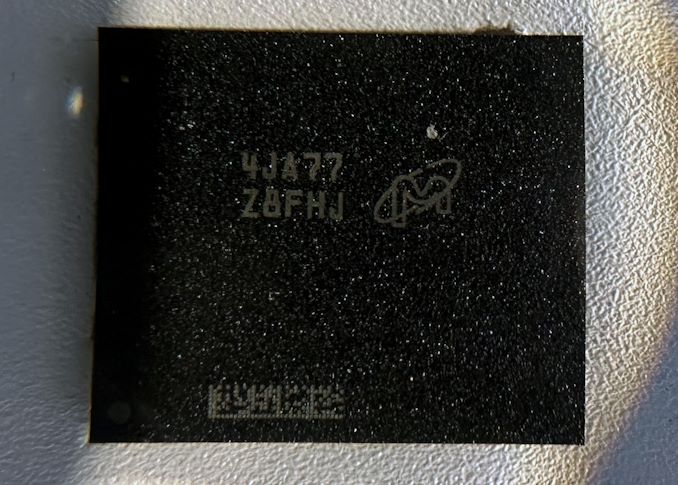




 Quote
Quote
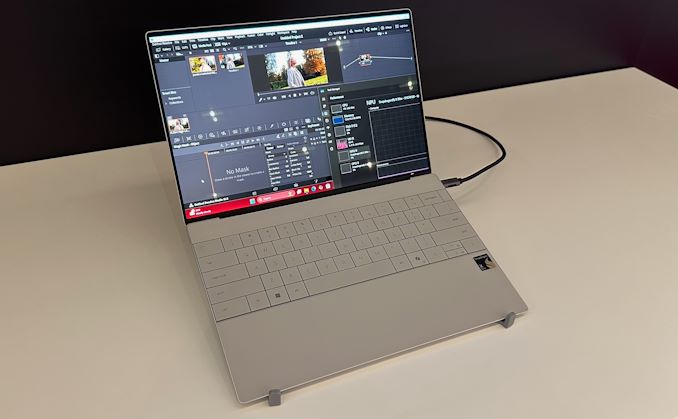
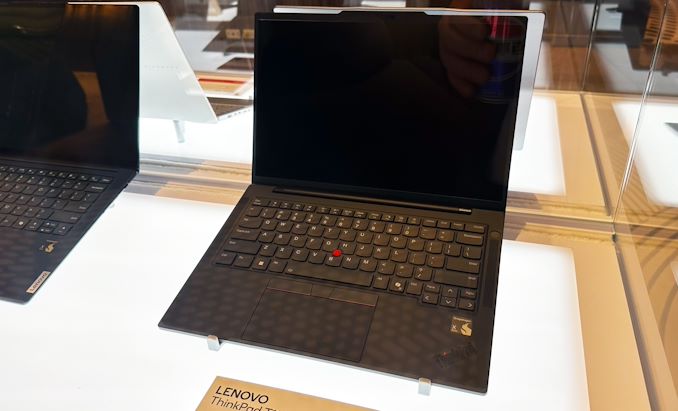
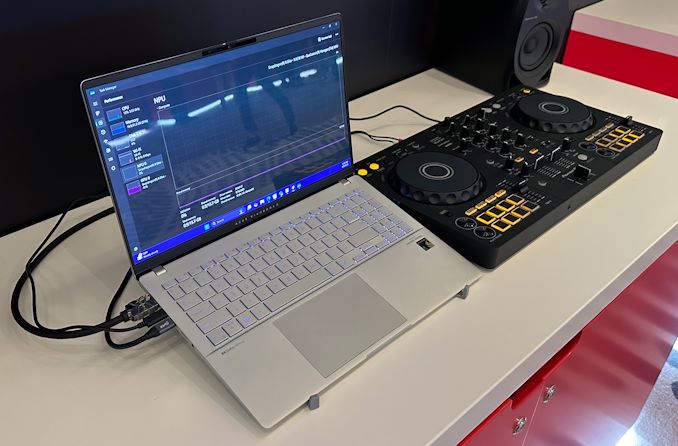
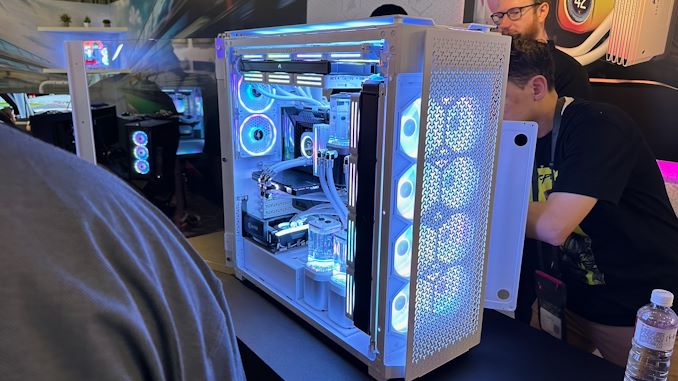
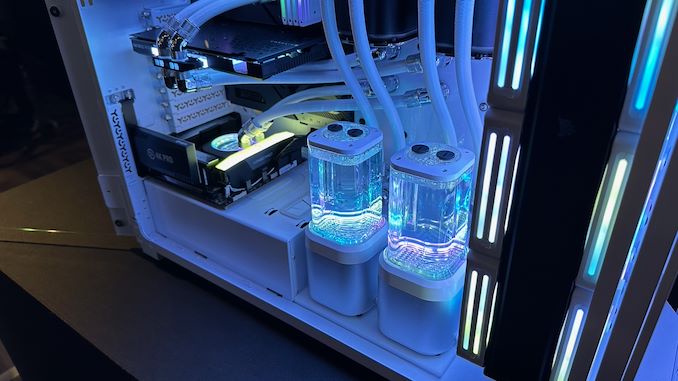
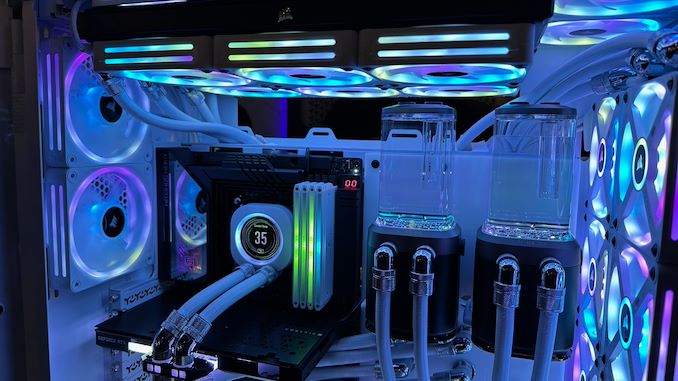
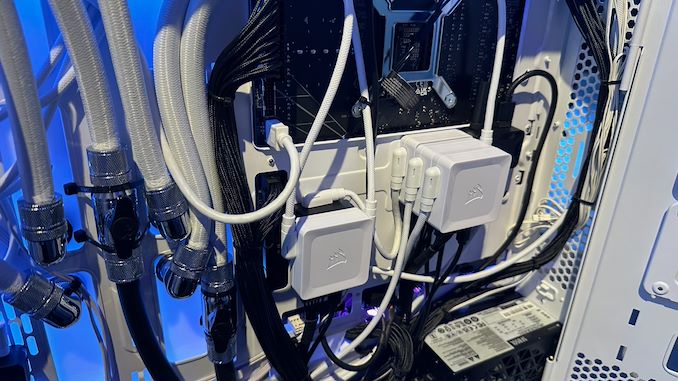
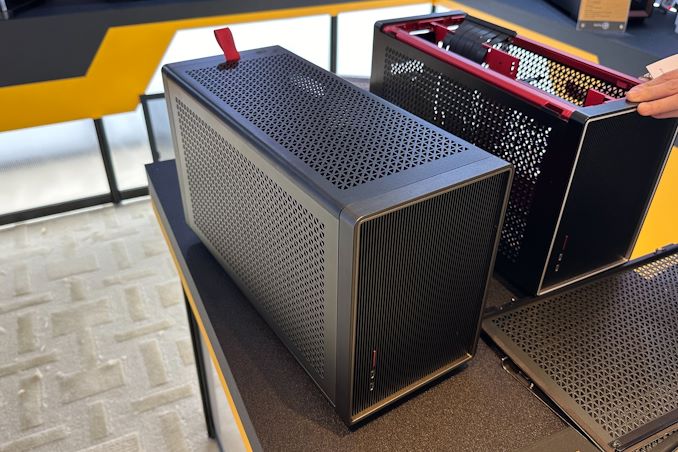
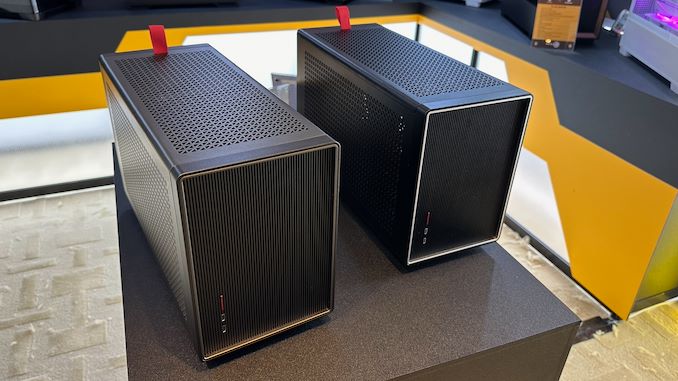
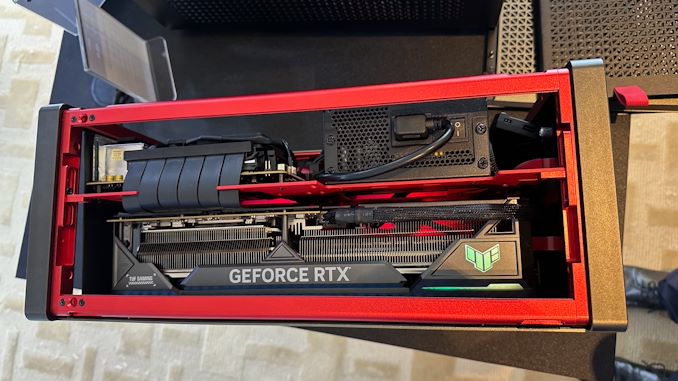
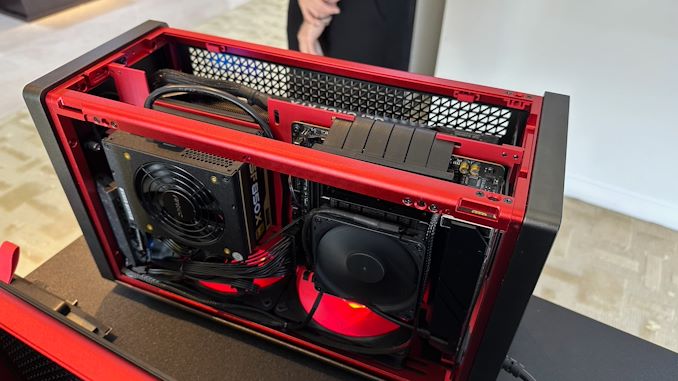
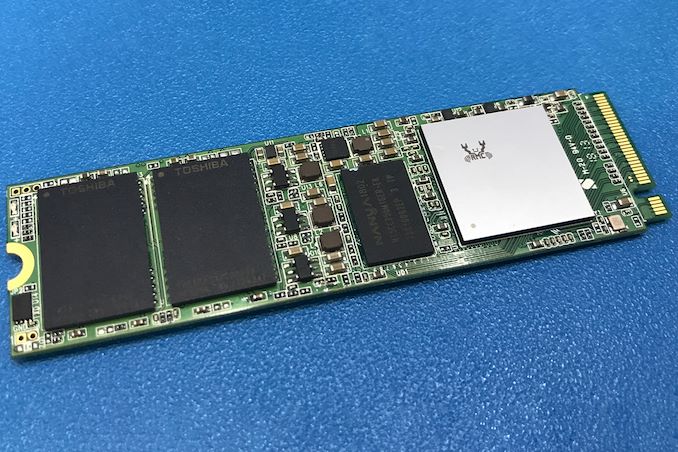

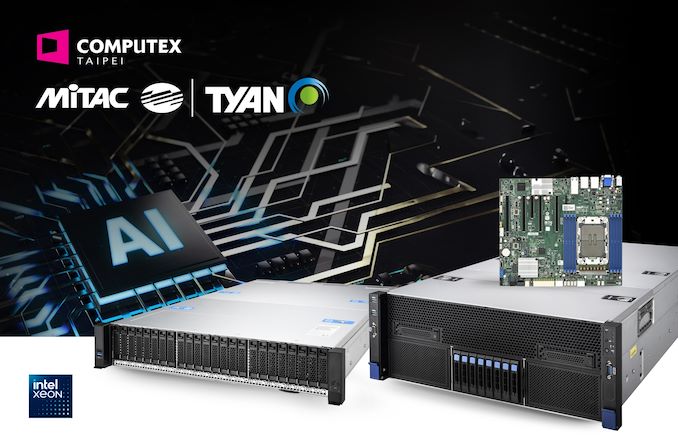
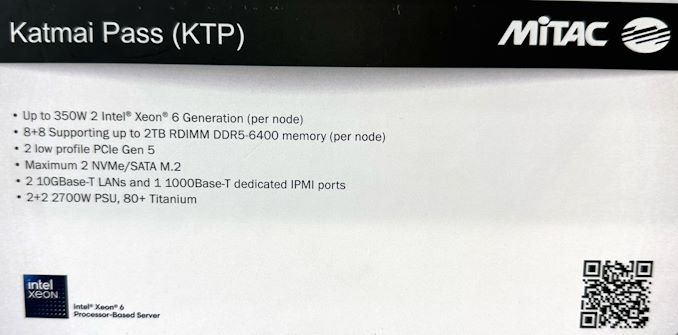
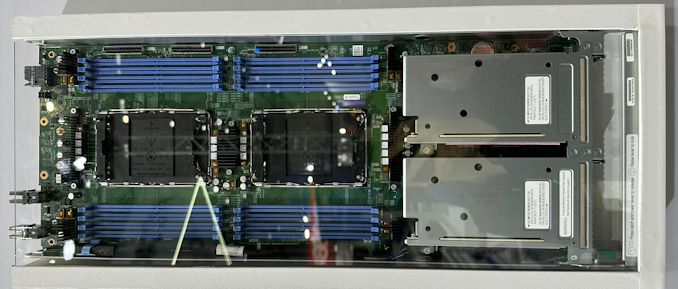
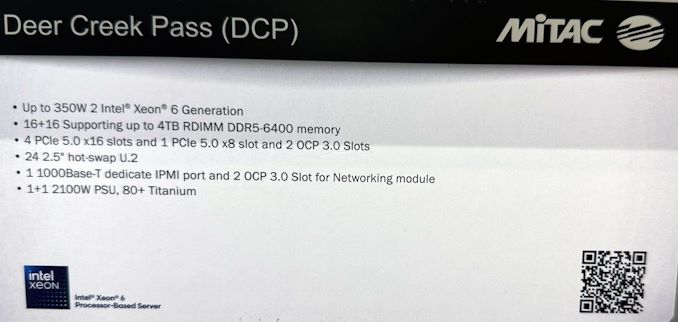
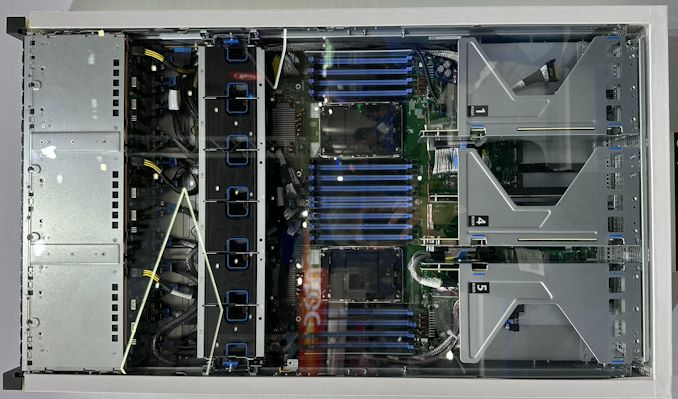
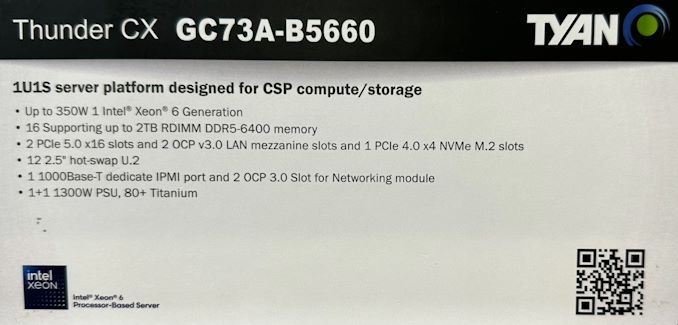
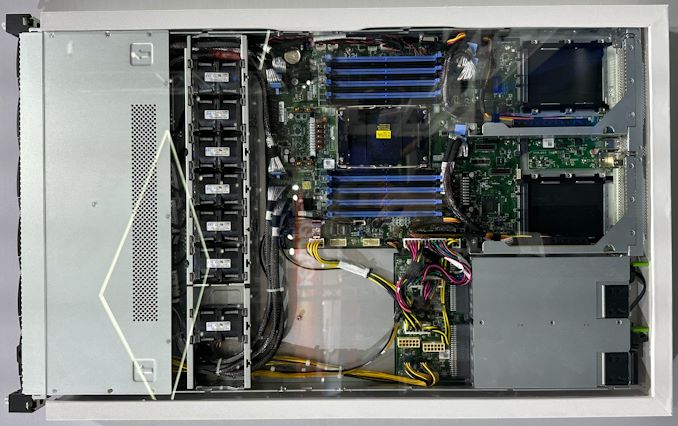
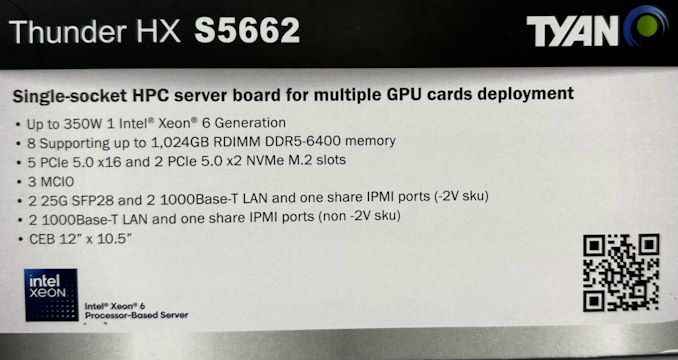
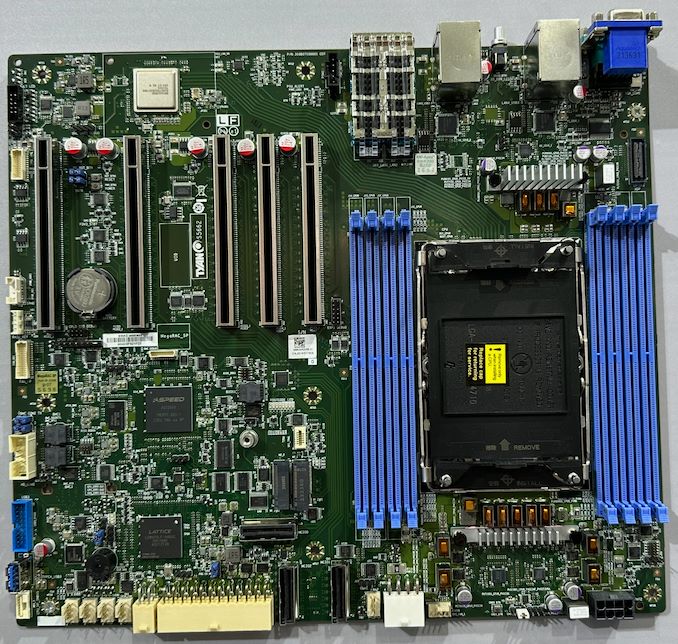
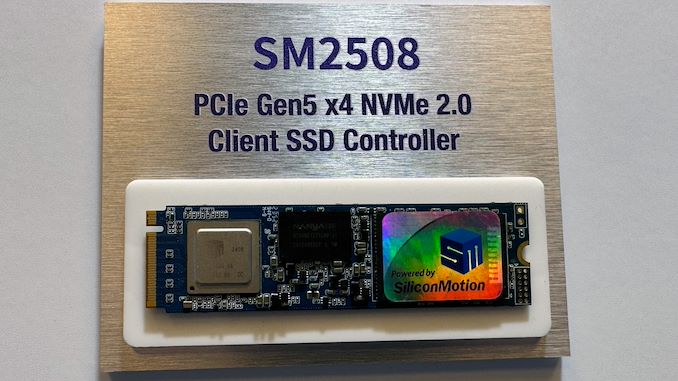
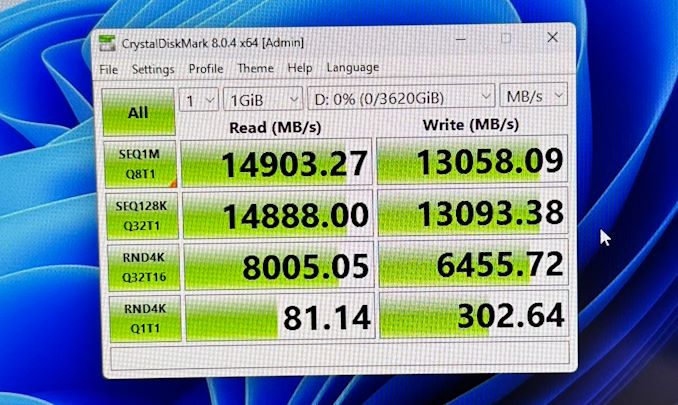
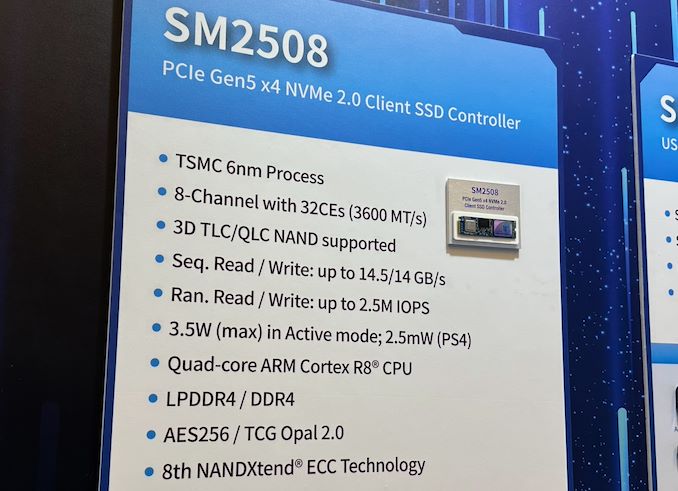
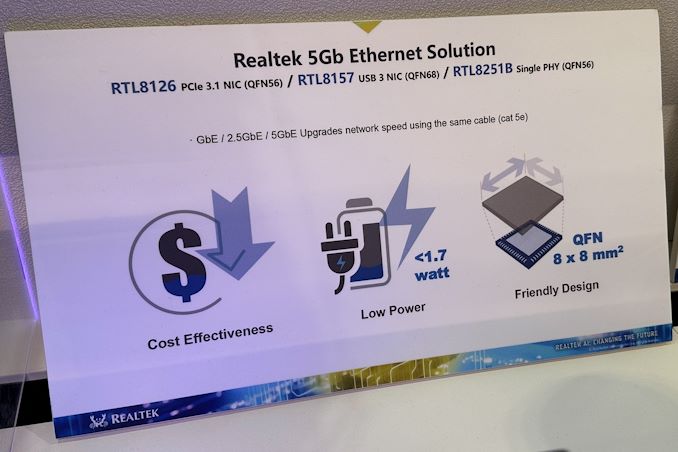

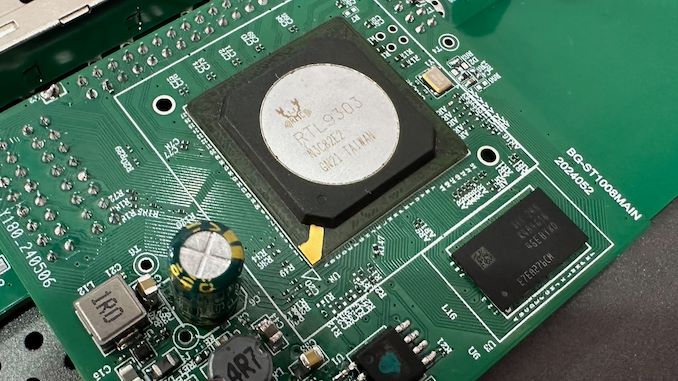
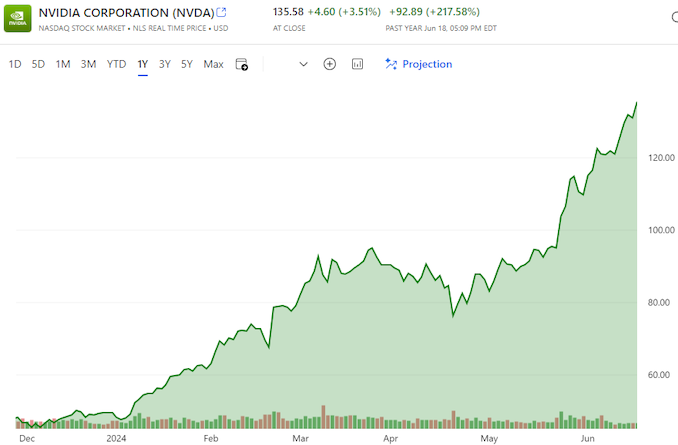
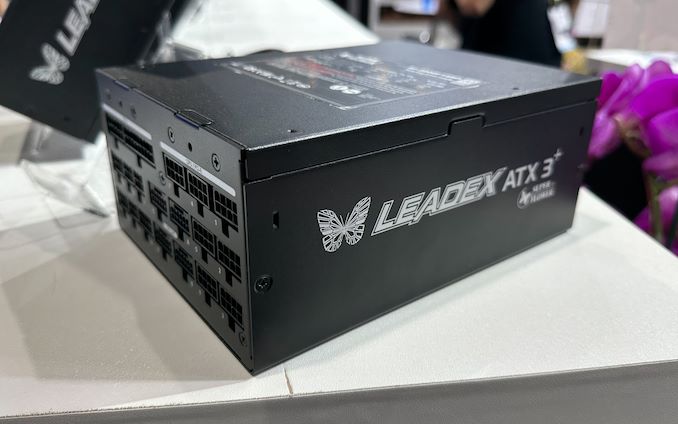
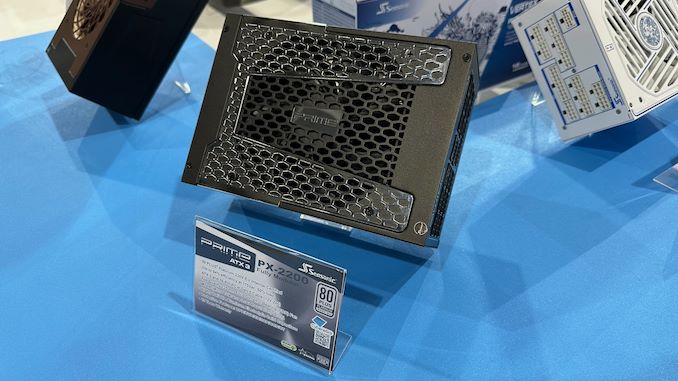
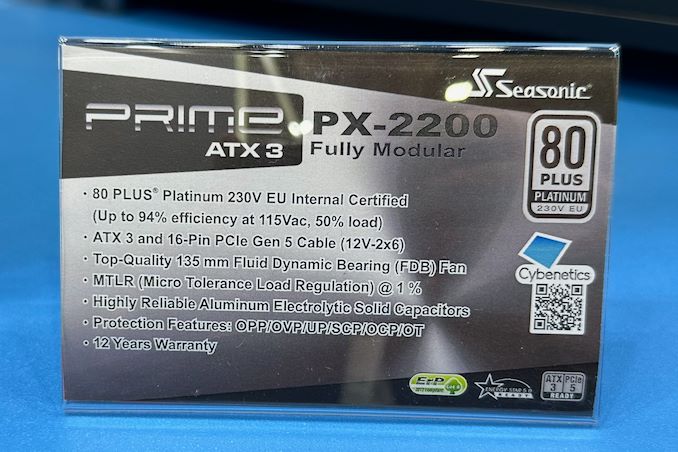
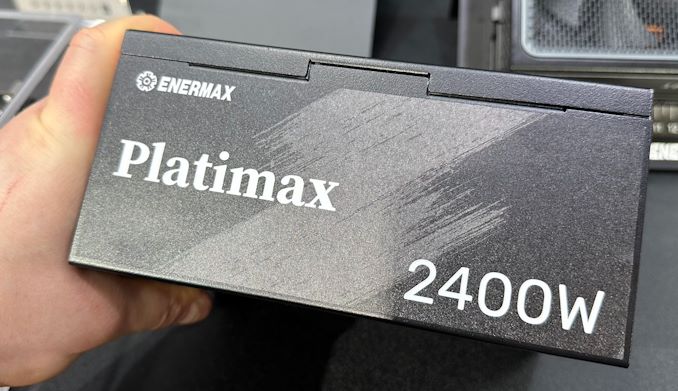
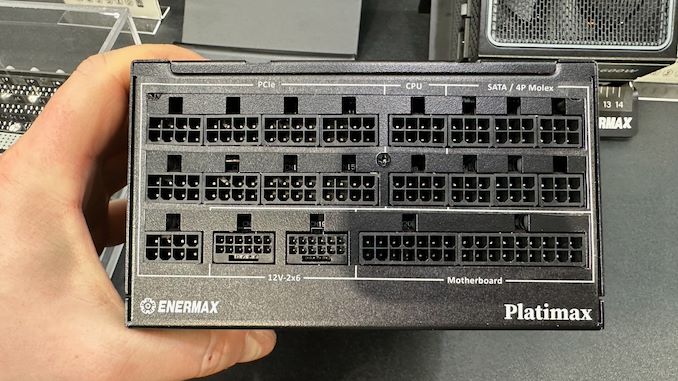
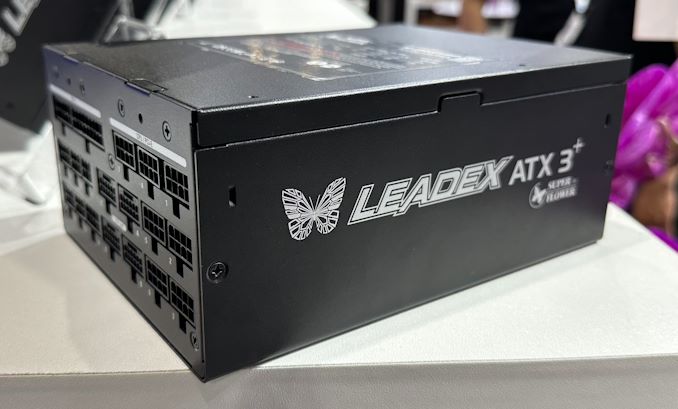
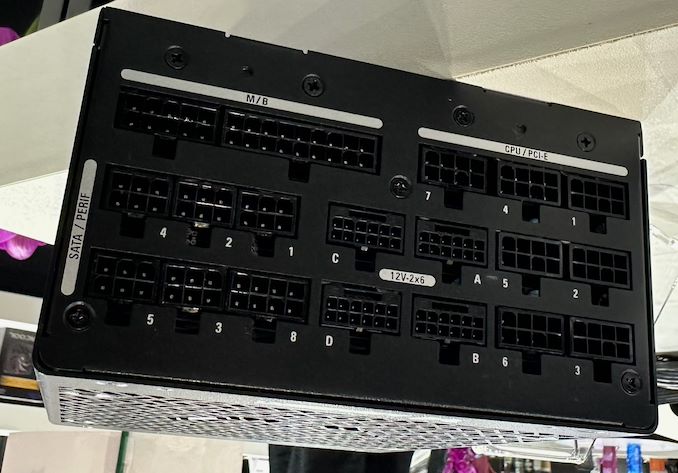
















Bookmarks